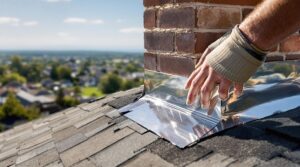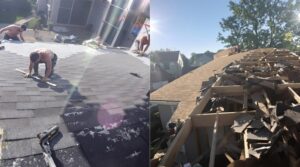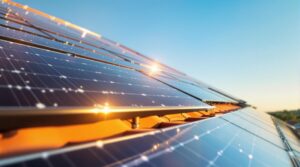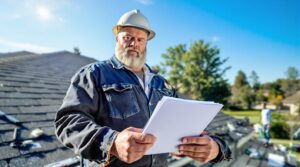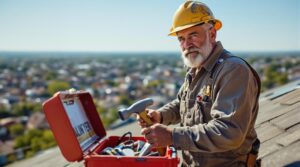Want to know the real lifespan of your membrane roof? Let's break it down in a way that won't put you to sleep!
Think of membrane roofing like a protective shield for your building – and just like any shield, some are built to last longer than others. Your trusty EPDM membrane is the marathon runner of the bunch, going strong for 30-50 years. PVC membranes are more like middle-distance runners, giving you a solid 20-30 years of protection, while TPO systems sprint through 15-20 years of service.
But here's the thing – your roof's lifespan isn't just about the material you choose. It's like taking care of a car; the better you maintain it, the longer it'll serve you. Professional installation is your foundation for success, and regular check-ups can boost your roof's performance by up to 25%.
Weather conditions, maintenance routines, and installation quality are the three musketeers that'll determine how long your membrane roof stays fighting fit. Think of it as a team effort – the right material paired with proper care creates a winning combination for your building's protection.
So, what affects your membrane roof's durability? Let's dive into the key players:
- Climate exposure
- Maintenance frequency
- Installation expertise
- Drainage efficiency
- UV resistance
Remember, investing in quality installation and regular maintenance isn't just spending – it's smart protection for your building's future!
Key Takeaways
Wondering How Long Your Membrane Roof Will Keep You Covered?
Think of membrane roofing like your favorite leather jacket – with proper care, it'll protect you for years to come! Let's break down the lifespan of different options:
EPDM: The Marathon Runner
These rubber-based champions lead the pack, lasting an impressive 30-50 years. Just like a well-maintained classic car, EPDM's UV-fighting superpowers and tough-as-nails durability make it the go-to choice for building owners who're playing the long game.
PVC: The Reliable Middle-Distance Runner
With a solid 20-30 year performance, PVC membranes can stretch their life to 40 years if you treat them right. It's like having a trustworthy family sedan – give it regular checkups, and it'll keep delivering mile after mile.
TPO: The Steady Performer
The newest kid on the block, TPO systems typically run 15-20 years, but don't count them out! With expert installation and TLC, they can reach 30 years – think of it as training your rookie athlete into a seasoned pro.
Your Roof's Life Coach? Maintenance!
Just as you wouldn't skip your car's oil changes, your membrane roof needs regular attention. Schedule twice-yearly checkups and address small issues before they become big headaches. Remember, your roof battles everything from scorching sun to freezing snow, so location and installation quality play starring roles in its longevity story.
Understanding Membrane Roofing Systems
Membrane roofing systems represent a modern evolution in flat roof technology, offering superior protection compared to traditional built-up roofing methods. The main membrane types include EPDM, TPO, modified bitumen, and built-up roofs, each designed for specific applications and environmental conditions.
Among the key roofing benefits of membrane systems are their superior seal integrity and simplified maintenance requirements. Unlike traditional systems that rely on multiple layers of asphalt and gravel, membrane roofs feature either seamless designs or strong seam construction, greatly reducing leak potential.
These systems also offer enhanced UV resistance without the need for protective gravel layers, and their direct attachment method eliminates unnecessary weight load on buildings. Additionally, membrane roofing has proven particularly effective for specialized applications such as pond and tank waterproofing.
The Lifespan of PVC Roofing Membranes
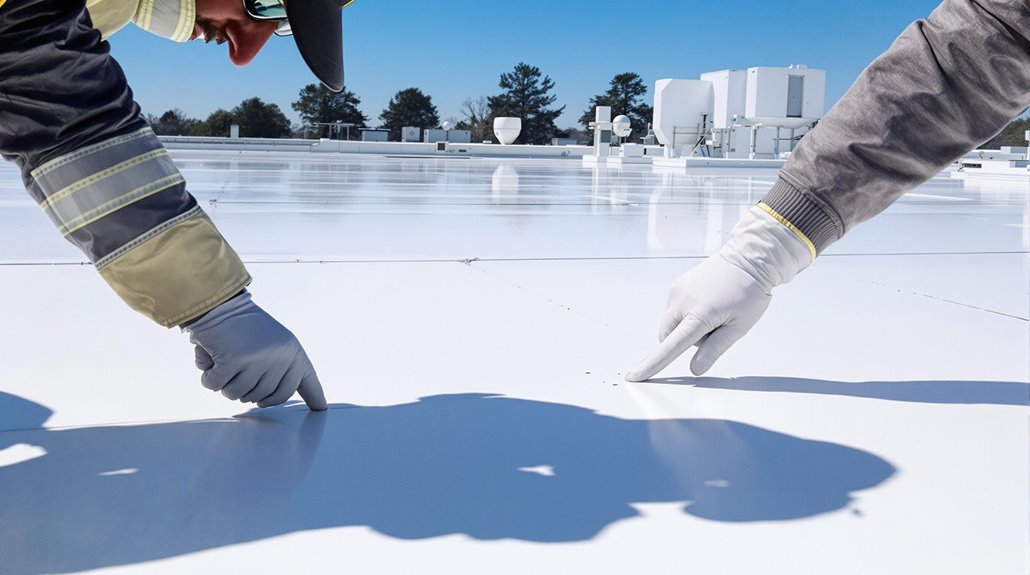
PVC roofing membranes represent a significant investment in building protection, with lifespans ranging from 20 to 30 years under normal conditions. High-quality materials and proper membrane installation techniques can extend this lifespan to 40 years or more, surpassing TPO alternatives while matching EPDM durability.
Several factors influence membrane longevity, including material quality, top layer thickness, and environmental exposure. Regular PVC membrane maintenance is essential for maximizing service life, involving periodic inspections to identify early signs of deterioration such as cracking, ponding water, or seam failures.
Professional evaluation of these indicators helps determine when replacement becomes necessary. Geographic location plays a critical role, as extreme weather conditions can accelerate aging and require more frequent maintenance intervals to maintain peak performance.
TPO Roofing: Expected Service Life
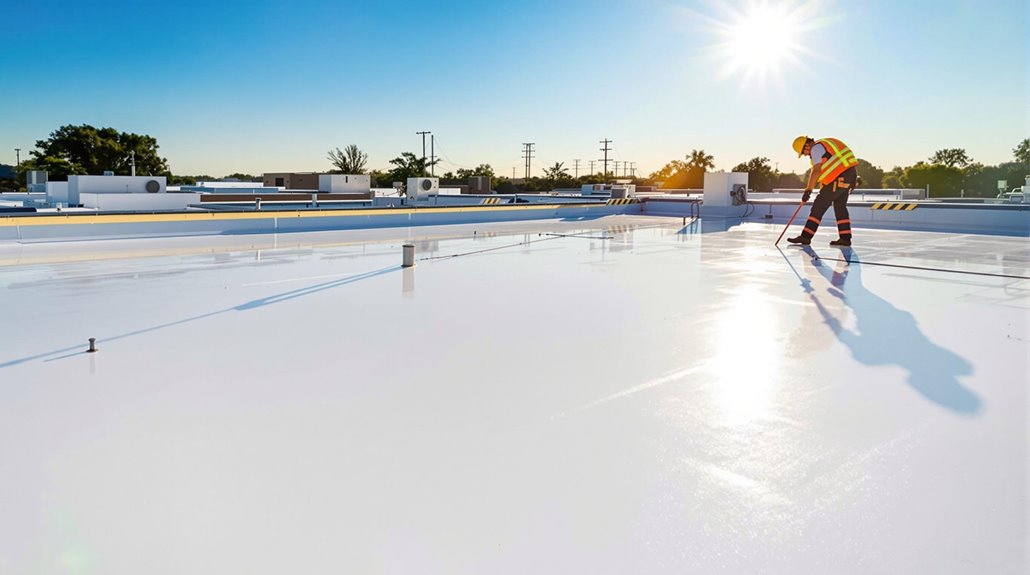
While modern roofing technologies continue to evolve, TPO (Thermoplastic Polyolefin) membranes typically provide 15 to 20 years of reliable service life under standard conditions.
With proper maintenance and professional installation, TPO roof systems can extend their lifespan to 25-30 years.
The durability of TPO roofing largely depends on installation quality and ongoing maintenance practices.
Regular inspections help identify potential issues before they become serious problems.
Environmental factors, including UV exposure and extreme weather conditions, can impact the membrane's longevity.
TPO roofs are inherently resistant to physical damage from hail and foot traffic, but ponding water and temperature fluctuations can accelerate wear.
A thorough maintenance plan, combined with professional installation and prompt repairs, remains essential for maximizing the roof's service life.
EPDM Roofing Duration and Performance
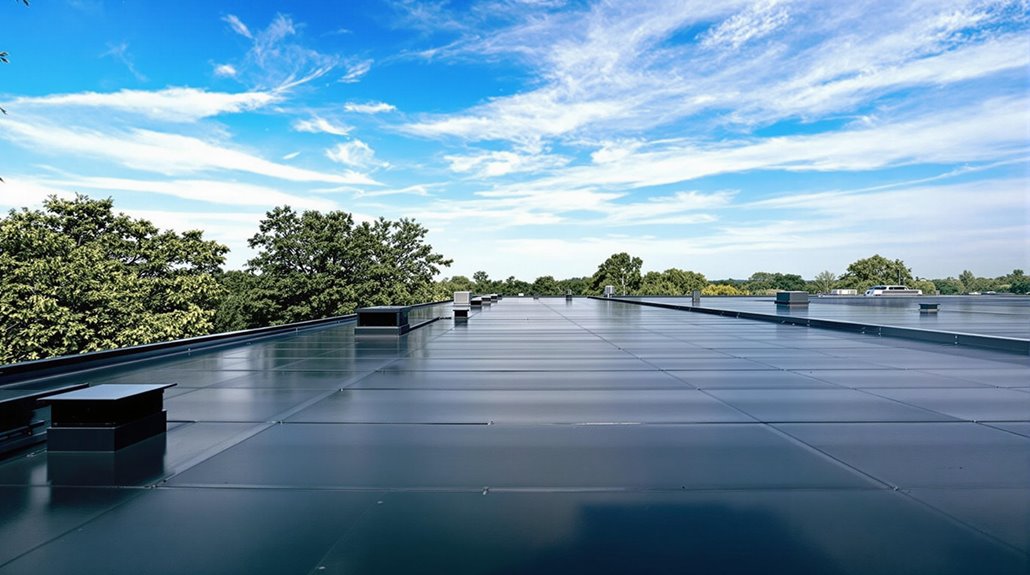
EPDM roofing membranes demonstrate exceptional longevity, with typical lifespans ranging from 30 to 50 years under normal conditions.
The material's durability stems from its cross-linked thermoset composition, which provides superior resistance to UV radiation, temperature fluctuations, and extreme weather events.
Field studies and laboratory tests confirm that properly installed and maintained EPDM roofs often retain their original performance characteristics even after three decades of service.
EPDM Longevity Factors
The longevity of membrane roofing systems depends greatly on the inherent properties of EPDM materials. Among the primary EPDM benefits is its thermoset composition, which guarantees dimensional stability through varying temperatures and weather conditions. This cross-linked structure contributes considerably to the material's long-term performance.
EPDM applications benefit from the material's exceptional resistance to environmental factors, including UV radiation, ozone exposure, and general weathering. The membrane's ability to maintain flexibility at low temperatures prevents the development of cracks and structural compromises that could otherwise reduce its service life.
This flexibility also facilitates installation around complex roof geometries, guaranteeing proper sealing and reducing the likelihood of premature failure points. The combination of these characteristics makes EPDM a reliable choice for extended roofing performance.
Weather Impact on EPDM
Severe weather conditions present significant challenges for roofing systems, yet EPDM membranes demonstrate exceptional resilience across diverse climate zones.
The material's weather resilience is evidenced by its ability to maintain dimensional stability in temperatures ranging from -45°F to 300°F, while effectively resisting UV radiation degradation.
EPDM's outstanding impact absorption capabilities protect against hail damage, with membranes capable of withstanding impacts from hailstones up to 2 inches in diameter.
The roofing system's cross-linked thermoset composition guarantees sustained performance through extreme temperature fluctuations, heavy snowfall, and intense winds.
Studies confirm that properly installed and maintained EPDM roofs can retain their structural integrity and waterproofing properties for over three decades, even when subjected to severe weather events.
Factors That Impact Membrane Roof Longevity
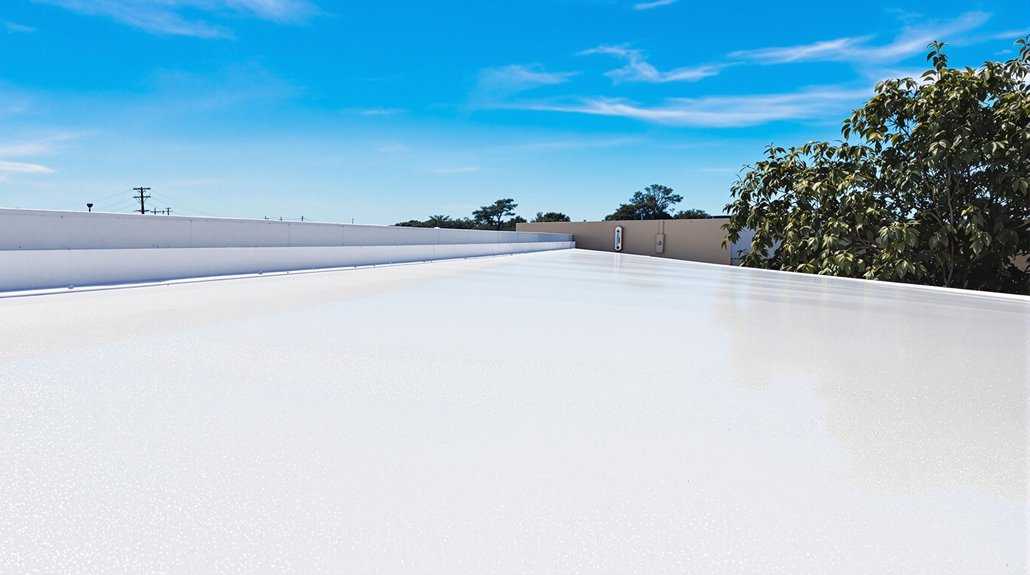
The quality of installation plays a critical role in determining how long a membrane roof system will last, as improper techniques can lead to premature failures regardless of material quality.
Weather conditions and climate factors considerably impact membrane roof longevity, with extreme temperatures, UV exposure, and severe storms potentially reducing the expected lifespan.
Professional installation combined with appropriate material selection for specific climate conditions helps maximize the durability and performance of membrane roofing systems.
Quality of Installation Process
Professional installation greatly impacts the longevity and performance of membrane roofing systems. Adherence to strict installation standards and quality assurance protocols guarantees proper material application and system integrity. This includes thorough substrate preparation, correct fastener placement, and proper seam welding techniques.
Quality control measures during installation require continuous inspection of materials and workmanship. The roofing contractor must verify that specified materials meet requirements, are properly stored, and remain undamaged before application.
Essential installation procedures include verifying the substrate is clean and dry, installing insulation boards with staggered joints, and achieving watertight seams. An on-site inspector monitors the process, identifying and correcting variances immediately to maintain installation quality.
These practices greatly influence the roof system's durability and effectiveness.
Weather and Climate Effects
Weather and climate conditions represent primary factors affecting membrane roof longevity. Among critical weather impacts, continuous UV exposure can lead to material degradation through fading, cracking, and shrinking.
Extreme temperature fluctuations stress roofing materials, while heavy rainfall and severe storms pose risks of leakage and physical damage.
Climate considerations vary considerably by region. Tropical zones face accelerated deterioration from intense UV radiation and heat, while northern regions contend with dramatic seasonal temperature variations.
Coastal environments present unique challenges due to salt exposure and frequent storms. Mountainous areas experience additional stress from high winds and snow loads.
To combat these environmental challenges, membrane roofs require materials specifically chosen for UV resistance, thermal stability, and water resistance, complemented by regular maintenance practices that address climate-specific wear patterns.
Essential Maintenance for Maximum Lifespan
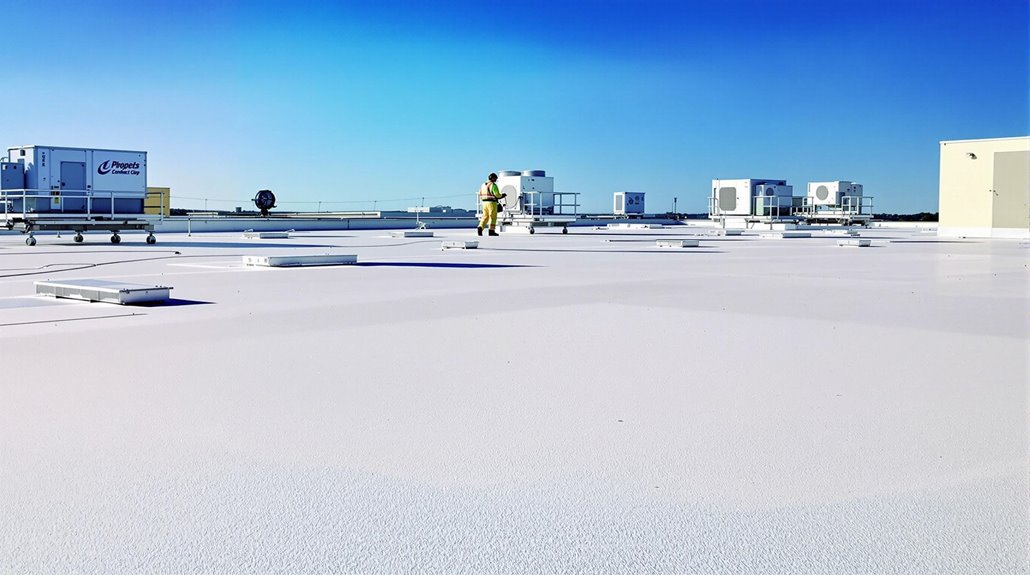
Maintaining membrane roofing requires a systematic approach to guarantee maximum longevity and performance. Regular roof inspections and well-planned maintenance schedules are fundamental to identifying potential issues before they escalate into major problems.
Semi-annual inspections, particularly during spring and autumn, help prepare the roofing system for extreme weather conditions.
- Conduct prompt repairs using appropriate materials, avoiding temporary solutions like universal peel-and-stick membranes.
- Install walk pads and minimize foot traffic to protect the membrane's integrity.
- Maintain rooftop appliances regularly to prevent leaks and chemical damage.
- Implement periodic cleaning routines to remove debris and prevent membrane deterioration.
Professional maintenance, including re-coating every 10-15 years, greatly extends the service life of membrane roofs, particularly for thicker materials like 90-mil EPDM systems.
Weather Effects on Membrane Roofing Durability
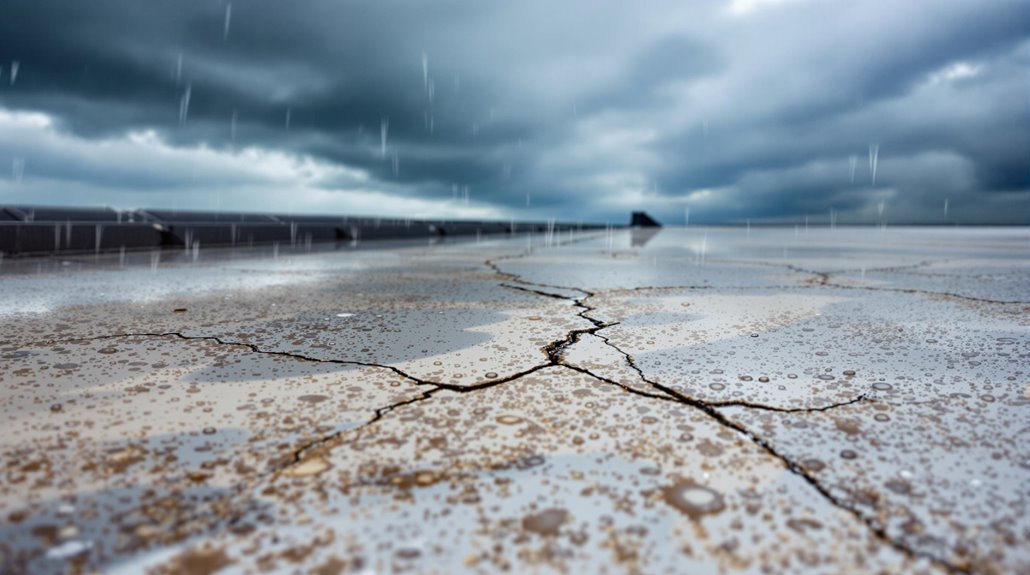
Although membrane roofing systems are engineered for durability, various environmental factors can greatly impact their longevity and performance. Temperature fluctuations can cause roofing materials to become brittle and lose flexibility, while moisture intrusion through precipitation or condensation threatens structural integrity. Proper system design must account for these challenges.
Extreme weather events pose significant risks, with hail resistance and wind effects being vital considerations. High winds can create uplift pressure, potentially compromising the protective barrier, while hailstones may puncture the membrane.
UV degradation over time further challenges material durability. To maximize lifespan, moisture management strategies and appropriate material selection are essential. The complete roofing system, including substrate and insulation, must be engineered to withstand local weather conditions, and regular maintenance must address weather-related damage promptly.
Comparing Different Membrane Roofing Options
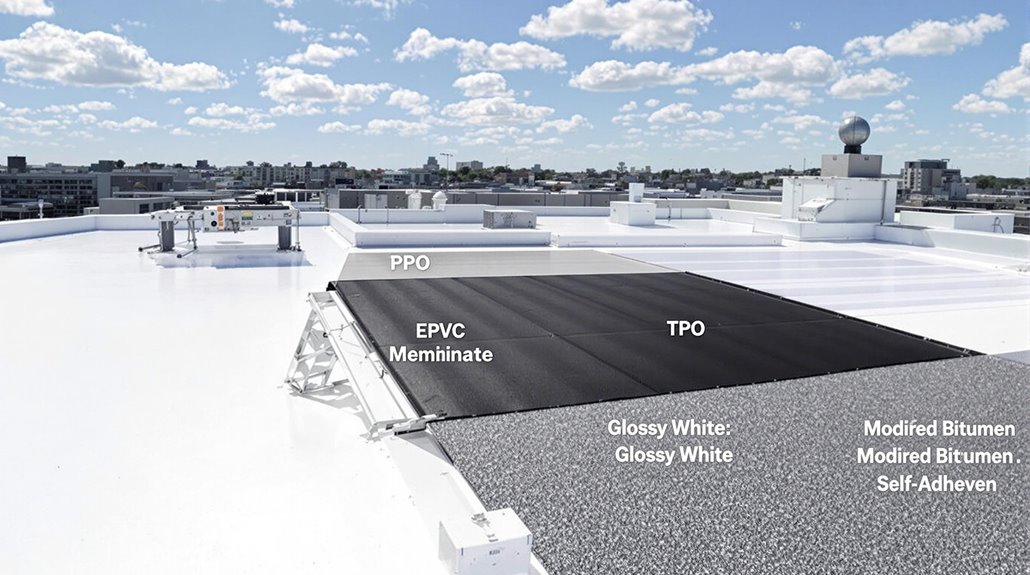
Different membrane roofing systems offer varying lifespans and performance characteristics, making material selection essential for long-term success. Among the primary membrane types available, EPDM demonstrates superior longevity with a 30-40 year lifespan, while TPO typically lasts 15-20 years. Installation techniques greatly impact durability across all options.
- EPDM membranes excel in tear and puncture resistance, offering exceptional value through their lightweight, flexible composition.
- PVC systems can achieve 20-30 year lifespans with proper maintenance and professional installation.
- TPO membranes provide excellent UV and heat resistance, making them ideal for sunny climates.
- Modified bitumen combines installation versatility with reliable 20-30 year performance, particularly in self-adhered applications.
Each membrane type presents distinct advantages, with lifespan variations directly correlating to material composition and environmental exposure.
Signs Your Membrane Roof Needs Replacement
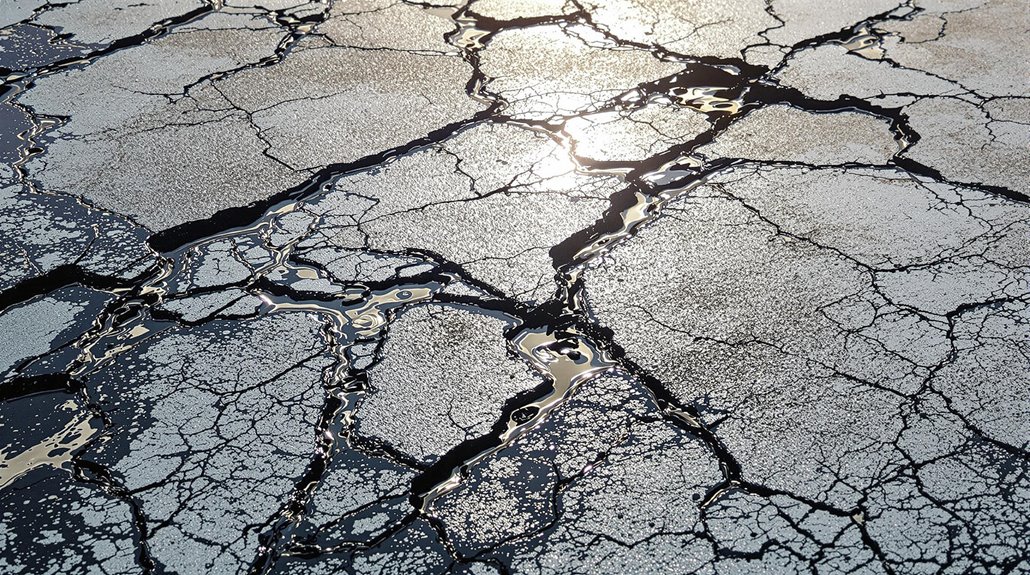
Recognizing the warning signs of membrane roof deterioration can prevent costly structural damage and interior water infiltration. Key replacement indicators include visible surface cracks, blisters, and tears in the membrane roofing material, along with delamination of membrane layers.
Performance issues such as persistent leaks, increased energy costs, and recurring drainage problems signal the need for replacement.
Regular inspections may reveal critical failures at seams, drains, and roof-wall intersections. Environmental factors, including prolonged UV exposure and extreme weather conditions, accelerate deterioration.
When maintenance records show frequent repairs of similar issues or inspection reports indicate widespread damage, replacement becomes necessary.
Additional warning signs include significant membrane discoloration, ponding water, and adhesive failures that compromise the roofing system's integrity.
The Benefits Of Consulting A Public Adjuster
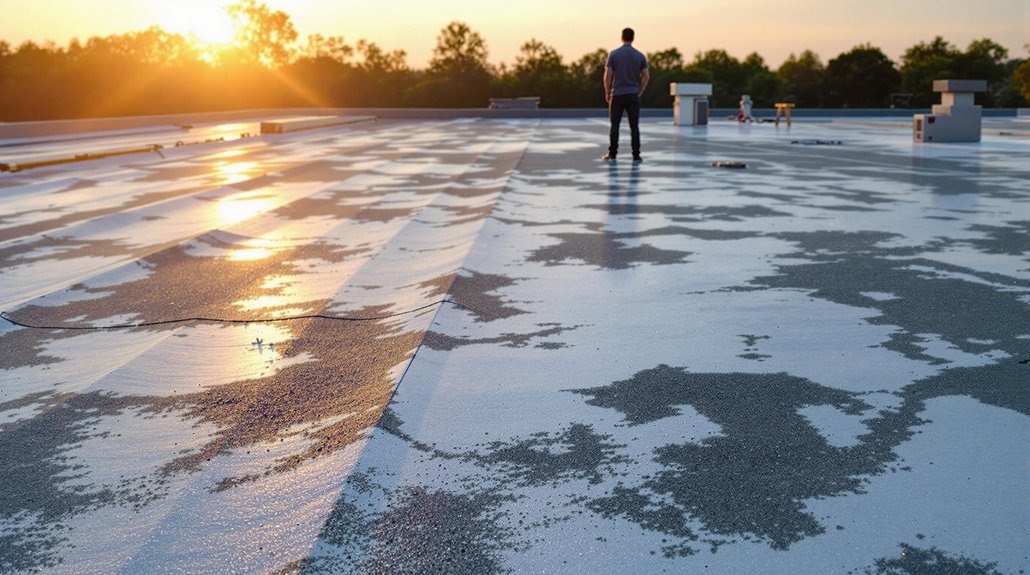
When dealing with membrane roof damage claims, consulting a public adjuster provides essential expertise in maneuvering complex insurance policies and maximizing claim settlements.
Public adjusters conduct thorough, objective assessments of roof damage while handling all documentation and communication with insurance companies, which streamlines the entire claims process.
Their specialized knowledge and negotiation skills typically result in higher claim payouts compared to policyholder-managed claims, making their services particularly valuable for substantial membrane roof damage.
Studies show that claims handled by public adjusters result in 800% higher settlements compared to those managed without professional representation.
Expertise In Insurance Claims
Managing insurance claims for membrane roof damage requires specific expertise that public adjusters uniquely provide. Their thorough understanding of insurance policy terms and the claims process enables them to effectively advocate for policyholders seeking fair compensation for roofing damage.
Public adjusters navigate complex procedures while ensuring all documentation meets stringent requirements.
- Interpret policy language and identify coverage limitations specific to membrane roofing systems
- Document detailed assessments of membrane damage, including photographic evidence and repair estimates
- Navigate technical aspects of roofing claims, including material specifications and installation requirements
- Negotiate with insurance carriers using industry knowledge to maximize settlement values
Their expertise proves particularly valuable when dealing with membrane roof claims, as these systems often require specialized knowledge to accurately assess damage and determine appropriate compensation levels. Research shows that claims handled by public adjuster settlements are typically 800% higher than those filed independently.
Objective Damage Assessment
Professional damage assessment through a public adjuster provides property owners with an unbiased evaluation of their membrane roofing systems.
These experts conduct systematic inspections to verify damage extent, deterioration patterns, and potential structural compromises that may affect the roofing performance.
Through extensive claims documentation, public adjusters guarantee all damages are properly identified and recorded, strengthening the policyholder's position during insurance negotiations.
Their objective analysis includes detailed examination of material failures, installation defects, and weather-related impacts on the membrane roofing.
This thorough damage verification process helps determine accurate replacement costs and necessary repairs while identifying covered perils under the insurance policy.
Their expertise proves invaluable in achieving fair settlements and maximizing insurance coverage for membrane roofing repairs or replacement.
With settlement increases up to 800% possible through public adjuster representation, property owners benefit significantly from their professional assessment services.
Streamlined Claim Process
Working with public adjusters substantially streamlines the insurance claims process for membrane roofing issues through systematic documentation and expert management.
Their professional approach guarantees efficient claim documentation while minimizing administrative burden and potential errors. Through established communication channels, adjusters facilitate effective claims negotiation with insurance companies, leading to faster resolutions.
- Electronic documentation systems reduce paperwork and improve accuracy in damage reporting
- Professional claims filing prevents common errors that often delay processing
- Direct communication channels with insurers expedite claim resolution
- Systematic management reduces policyholder stress and time investment
This streamlined approach allows property owners to focus on restoration while the adjuster handles the complex documentation, communication, and negotiation aspects of the claims process.
Their expertise particularly benefits membrane roofing claims, which often require specialized knowledge and detailed documentation.
Unlike insurance company adjusters who protect insurer interests, public adjusters represent policyholders by advocating for fair settlements and comprehensive coverage of membrane roofing damage.
Higher Claim Payouts & Settlements
Beyond streamlined processes, statistical evidence demonstrates that engaging public adjusters leads to markedly higher insurance claim settlements for membrane roofing damage. Professional damage assessment reveals an average 19% increase in claim payouts when public adjusters manage the process. Their expertise in claim negotiation and thorough property evaluation guarantees maximum compensation for all covered damages.
| Benefit | Impact |
|---|---|
| Settlement Size | 19% Higher Average Payout |
| Damage Detection | Complete Assessment Coverage |
| Negotiation Power | Enhanced Settlement Terms |
| Documentation | Professional Presentation |
Public adjusters leverage their technical knowledge to identify often-overlooked damage components and expertly present claims to insurance carriers. Their professional detachment and understanding of policy terms enable them to secure top settlements while maintaining objectivity throughout the negotiation process. Studies show that cases with public adjuster representation consistently achieve settlements up to 800% higher than those without professional assistance.
About The Public Claims Adjusters Network (PCAN)
The Public Claims Adjusters Network (PCAN) stands as a detailed claims management organization with over 40 years of industry expertise. Their network of claims adjusters specializes in extensive solutions from initial notice of loss through final settlement.
The network benefits clients through professional handling of both daily and catastrophic claims, supported by an efficient call center infrastructure.
Key aspects of PCAN's service delivery include:
- Professional management of claims from first notice to final resolution
- Experienced CAT adjusters for catastrophic event response
- Customized solutions addressing unique operational challenges
- Seamless communication throughout the claims lifecycle
Client testimonials consistently highlight PCAN's expertise, professionalism, and ability to deliver ideal outcomes in complex insurance claims scenarios, making them a trusted partner in the industry.
Frequently Asked Questions
Can Membrane Roofing Be Installed Over Existing Shingles?
Installing membrane roofing over existing shingles is not recommended. Despite potential installation process simplification, this practice compromises structural integrity, voids warranties, and negates membrane roofing advantages through improper substrate conditions.
How Much Weight Does Membrane Roofing Add to My Building Structure?
Membrane roofing systems typically add minimal weight, ranging from 0.5 to 1.5 pounds per square foot, maintaining structural integrity. Installation methods affect total load, with ballasted systems adding more weight than adhered options.
Are Membrane Roofs Suitable for Residential Homes With Steep Pitches?
While membrane roofing benefits are endless, these systems aren't recommended for steep pitches, as they're specifically engineered for flat or low-slope applications, requiring different installation methods and waterproofing considerations.
What Colors Are Available for Membrane Roofing Materials?
Membrane roofing color options vary by material type. PVC offers white, gray, and tan selections for enhanced aesthetics, while EPDM typically comes in black and white. Custom colors may be available from specific manufacturers.
Can I Walk on My Membrane Roof for Maintenance Purposes?
Studies show 90% of membrane roofs support light maintenance traffic. Both EPDM and PVC membranes allow occasional foot traffic, but using protective boards and avoiding studded footwear maximizes membrane durability.
References
- https://monarchroofing.biz/how-long-does-pvc-roofing-last/
- https://www.summitcommercialroofing.com/life-spans-of-commercial-flat-roof-membranes/
- https://www.improveitmd.com/blog/how-long-does-a-roof-last-everything-you-need-to-know
- https://www.holcimelevate.com/us-en/roof-topics/how-long-does-an-epdm-roof-last
- https://www.professionalroofing.net/Articles/A-study-of-longevity–02-01-2014/2406
- https://en.wikipedia.org/wiki/Membrane_roofing
- https://myroofhub.com/flat-roofs/epdm-rubber-roof-lifespan-expectations/
- https://roofreplacementcontractor.net/blogs/how-long-does-tpo-roof-last/
- https://www.archtoolbox.com/flat-roof-membranes/
- https://rhroofing.org/2025/01/how-long-do-pvc-roofs-last/
